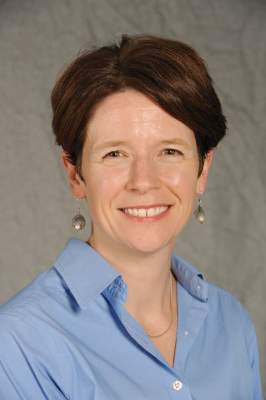User login
As the year comes to an end, I have decided – after 9 years of writing for Pediatric News – to bring my column to a close. It has been a great joy to be a part of the pediatric community in this way, and I have been grateful for those of you who approach me at meetings, saying, “Hey, I recognize you – I really like your column!” or tell me you appreciated a particular topic or piece of advice.
As I reflected on the columns I have written, I realized there were two themes that repeatedly emerged as most meaningful to me. While these thoughts are nothing new, I thought they would be a fitting way to sum up my writings over the years.
First, and most important, is that patients and families are the best partners we have in the care we give. When we take the time to listen to them, involve them in decision making and think past what we see on the surface, kids are healthier. This is just as true for preventative “well-baby” care as it is for acute and specialty care. Understanding a family’s priorities, values, and the context in which they live is just as important as our medical knowledge and skills when taking care of patients. Pediatricians are expert at bringing all of these things together, grounded in the best and most up-to-date evidence available, and in doing so elevate the care of children.
Which leads me to the second theme – pediatricians are a strong and important voice for children, and it is important for us to learn to lead. Through our work, we have a window into the lives of children, both when they are healthy and when they are sick. That is a great privilege but also a great responsibility. We see the things that work well in our systems and the things that do not. We see the amazing things children are capable of, but also troubling and pervasive inequities in care, access, and education. We see children who aren’t having their basic needs met – things like food, shelter, and a safe place to play. We see how these inequities impact health and wellness – both now and as children grow into adults. These observations, and the things we learn by caring for children and families day in and day out, can be translated into action. For each of us that will mean something different, but it is imperative that we develop our talents as advocates and leaders so that we can catalyze change. Our best hope for making things better is if we each do our part to create solutions. And when that happens, children – a lot of children – are healthier.
Since I began my first column 9 years ago, a lot has changed for me, and I suspect for many of you. When I first began writing, my now tall, confident tween (who already wears the same shoe size as me!) was barely walking. Thank you to all who have listened and encouraged me along the way – it has been a fun journey, and I’ve appreciated your time.
Dr. Beers is assistant professor of pediatrics at Children’s National Medical Center and the George Washington University Medical Center, both in Washington. She is chair of the American Academy of Pediatrics Committee on Residency Scholarships and immediate past president of the District of Columbia chapter of the American Academy of Pediatrics.
As the year comes to an end, I have decided – after 9 years of writing for Pediatric News – to bring my column to a close. It has been a great joy to be a part of the pediatric community in this way, and I have been grateful for those of you who approach me at meetings, saying, “Hey, I recognize you – I really like your column!” or tell me you appreciated a particular topic or piece of advice.
As I reflected on the columns I have written, I realized there were two themes that repeatedly emerged as most meaningful to me. While these thoughts are nothing new, I thought they would be a fitting way to sum up my writings over the years.
First, and most important, is that patients and families are the best partners we have in the care we give. When we take the time to listen to them, involve them in decision making and think past what we see on the surface, kids are healthier. This is just as true for preventative “well-baby” care as it is for acute and specialty care. Understanding a family’s priorities, values, and the context in which they live is just as important as our medical knowledge and skills when taking care of patients. Pediatricians are expert at bringing all of these things together, grounded in the best and most up-to-date evidence available, and in doing so elevate the care of children.
Which leads me to the second theme – pediatricians are a strong and important voice for children, and it is important for us to learn to lead. Through our work, we have a window into the lives of children, both when they are healthy and when they are sick. That is a great privilege but also a great responsibility. We see the things that work well in our systems and the things that do not. We see the amazing things children are capable of, but also troubling and pervasive inequities in care, access, and education. We see children who aren’t having their basic needs met – things like food, shelter, and a safe place to play. We see how these inequities impact health and wellness – both now and as children grow into adults. These observations, and the things we learn by caring for children and families day in and day out, can be translated into action. For each of us that will mean something different, but it is imperative that we develop our talents as advocates and leaders so that we can catalyze change. Our best hope for making things better is if we each do our part to create solutions. And when that happens, children – a lot of children – are healthier.
Since I began my first column 9 years ago, a lot has changed for me, and I suspect for many of you. When I first began writing, my now tall, confident tween (who already wears the same shoe size as me!) was barely walking. Thank you to all who have listened and encouraged me along the way – it has been a fun journey, and I’ve appreciated your time.
Dr. Beers is assistant professor of pediatrics at Children’s National Medical Center and the George Washington University Medical Center, both in Washington. She is chair of the American Academy of Pediatrics Committee on Residency Scholarships and immediate past president of the District of Columbia chapter of the American Academy of Pediatrics.
As the year comes to an end, I have decided – after 9 years of writing for Pediatric News – to bring my column to a close. It has been a great joy to be a part of the pediatric community in this way, and I have been grateful for those of you who approach me at meetings, saying, “Hey, I recognize you – I really like your column!” or tell me you appreciated a particular topic or piece of advice.
As I reflected on the columns I have written, I realized there were two themes that repeatedly emerged as most meaningful to me. While these thoughts are nothing new, I thought they would be a fitting way to sum up my writings over the years.
First, and most important, is that patients and families are the best partners we have in the care we give. When we take the time to listen to them, involve them in decision making and think past what we see on the surface, kids are healthier. This is just as true for preventative “well-baby” care as it is for acute and specialty care. Understanding a family’s priorities, values, and the context in which they live is just as important as our medical knowledge and skills when taking care of patients. Pediatricians are expert at bringing all of these things together, grounded in the best and most up-to-date evidence available, and in doing so elevate the care of children.
Which leads me to the second theme – pediatricians are a strong and important voice for children, and it is important for us to learn to lead. Through our work, we have a window into the lives of children, both when they are healthy and when they are sick. That is a great privilege but also a great responsibility. We see the things that work well in our systems and the things that do not. We see the amazing things children are capable of, but also troubling and pervasive inequities in care, access, and education. We see children who aren’t having their basic needs met – things like food, shelter, and a safe place to play. We see how these inequities impact health and wellness – both now and as children grow into adults. These observations, and the things we learn by caring for children and families day in and day out, can be translated into action. For each of us that will mean something different, but it is imperative that we develop our talents as advocates and leaders so that we can catalyze change. Our best hope for making things better is if we each do our part to create solutions. And when that happens, children – a lot of children – are healthier.
Since I began my first column 9 years ago, a lot has changed for me, and I suspect for many of you. When I first began writing, my now tall, confident tween (who already wears the same shoe size as me!) was barely walking. Thank you to all who have listened and encouraged me along the way – it has been a fun journey, and I’ve appreciated your time.
Dr. Beers is assistant professor of pediatrics at Children’s National Medical Center and the George Washington University Medical Center, both in Washington. She is chair of the American Academy of Pediatrics Committee on Residency Scholarships and immediate past president of the District of Columbia chapter of the American Academy of Pediatrics.

